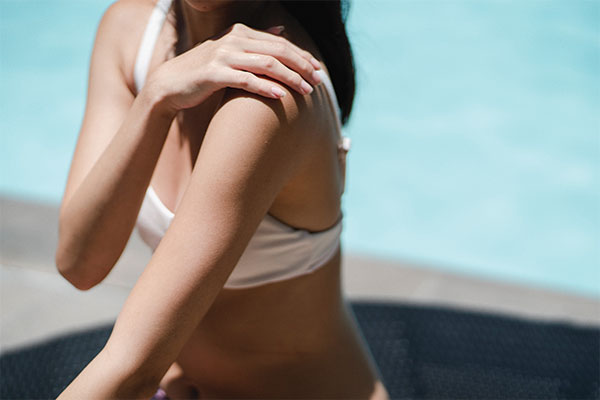Sunscreen
Do you ever wonder to yourself, “What sunscreen should I be using? How often do I need to reapply it?” Warmer weather is approaching. Protecting yourself and your loved ones from the sun’s ultraviolet (UV) radiation should be a priority.
Who doesn’t appreciate the warm sunlight? Especially after months of cooler weather, weall look forward to the beach and other various outdoor activities. But before running outside to enjoy the seasonal heat, don’t forget to protect your skin.
The sunshine can be damaging, and sunburns are easy to come by. Wearing sunscreen provides a layer of protection against the sun’s rays, which can be dangerous to us over time.
What exactly is SPF?

SPF stands for Sun Protection Factor. Basically, it represents how well that sunscreen will protect your skin from the sun’s UV rays. Sunscreens have different SPF; in general, the higher the better, but your choice depends on how much you want to protect your skin.
Types, labels, etc
Sunscreen comes in various forms such as lotion, spray, and stick. The stick forms are for your face because it is easier to spread without irritating your eyes.
Apply sunscreen to all areas of your skin openly exposed to the sun, which is to say any area that is not covered by clothes or a hat. When used, sunscreen creates a protective barrier between your skin and the sun’s UV rays.
Reading the labels on sunscreen can help you find suitable protection for your skin. The most popular SPF found in drug stores are 15, 30, and 50. You can find 70 SPF and a few other choices, though they are not as common as the previous numbers mentioned. What exactly do these numbers mean? SPF determines how much the exposure to the sun’s UV radiation is mitigated. Overexposure can lead to sunburns,tanning, and possibly even skin cancer.
How to know what SPF to use?
There isn’t a specific number your sunscreen has to be, but the higher your choice of SPF, the safer you’ll be. On average sunscreens range from 15 SPF to 50 SPF.
The strength of sunscreen you’ll need depends on how much sun exposure you expect to have and how much you want to protect your skin. If you plan on staying outside all day, an SPF of at least 30 would be safer for both adults and children. However, 50 SPF would be an even safer and more reliable choice. Babies should not use sunscreen if they are younger than six months.
Another factor to keep in mind is that sunscreen needs to be reapplied on average every two hours. People tend to think that once sunscreen is applied, it will last for the rest of the day; this is not true! We will delve into why that is later on.
Another misconception is that darker skin tones do not need sunscreen, and lighter skin tones need a double layer. Sunscreen should be applied as the label reads the same way for all skin tones. Sunscreen is protection needed for all skin types; the sun’s UV rays are harmful to anyone who is exposed to them for a long period of time, no matter their skin tone.
Water Resistant Sunscreen
When shopping for sunscreen, read the labels because some are water-resistant. That is what you want if you expect to spend time in the water while outside.
Swimming and surfing are some of the water activities we all look forward to enjoying in the sun. It is important to remember to apply a water-resistant sunscreen for such outings. Regular sunscreen will come off in the water, leaving you unprotected.
Water-resistant sunscreens sustain durability in the water, but they need to be reapplied about an hour after getting wet. When you dry yourself with a towel, it may also rub some of the sunscreen off, and you may need to reapply. Keep all those factors in mind.
Going Higher is Safer
Increasing your SPF to 50 would better protect your skin from UV exposure.
If you plan on being outside most of the day, be aware of the sun’s radiation and keep some precautions in mind.
Spending time in the shade can help decrease your chance of sunburn and sun exposure. Reapplying sunscreen throughout the day will give you the most protection. Remember, everyone sweats when standing outside during the summer, and you can easily sweat off some of your sunscreen.
When purchasing sunscreen, read the label carefully. Use a safe SPF number of at least 30, but 50 is safer. Look for water resistance if you are planning to be in the water, or even just sweating a lot.
Conclusion
You can have all the fun you want under the sun, but make it safe and secure. Wearing sunscreen gives you that peace of mind.












